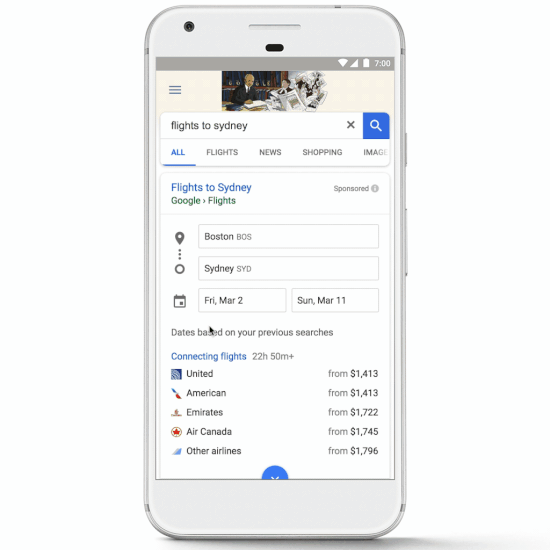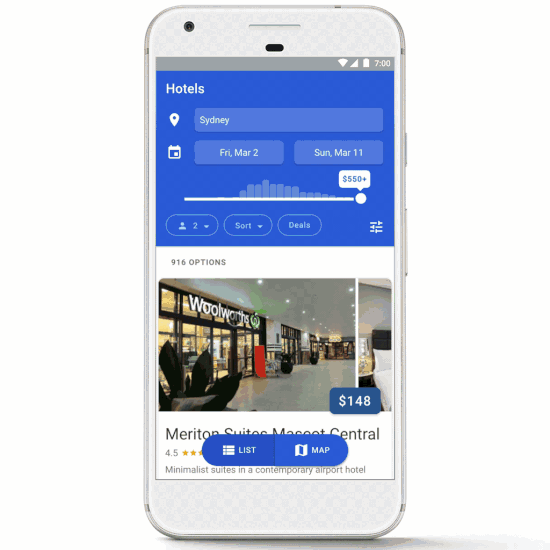
Google updates UX to make flight and hotel bookings easier on mobile
By cameron in Uncategorized
With experts emphasizing the importance of UX, and consumers responding to well-designed products, it’s more than just a nice-t0-have. An intuitive user experience is critical in today’s competitive environment. Especially on mobile, where smaller screen sizes require more easier-to-use products.
This week, Google is rolling out improvements to its mobile experience for its flights, hotels, and discovery products. The company, which has long made for anxious hand-wringing with its travel products, has made navigating on mobile much more straightforward. From searching through reviews to exploring hotel room categories to the actual bookings, the next iteration is a tighter, more integrated experience.
Fewer queries with new tabbed navigation
In a product demo with tnooz, director of travel product management Eric Zimmerman shared how the product has been streamlined from previous versions, which were much more query-focused. The result of this focus is a tabbed navigation for discovery, flights, hotels, he said:
“We really focused on connecting the pieces so there are not new queries. Travelers don’t have to type new queries each and every time. They can just tab over for each search.”
This makes it much easier to switch between discovery mode, flights, and hotels. A user can select a flight, and then click over to hotels or discovery. The same search will be shared across the tabs. Previously, this was accomplished by typing a query for each specific category.

Navigating from Google’s flight search to hotel search will soon be easier on mobile
Enhanced hotels with visual search for room category
One of the most visible changes is on the hotel product, where room categories can quickly be viewed while browsing. This is especially handy for travelers, as they no longer have to head to another site to view which room categories are available and at what price. It’s a great way to decide which hotel to book, as each room category can now be compared across hotels.
The hotels view, Zimmerman says, uses “the same thinking to make it much more engaging and easier to work with on a phone. It’s much tap-focused and easier to navigate on mobile.”
Google has also made it clear that it will be using data for hotels like it does for its flights product. With recent moves from Hopper, there’s a beneficial trend of data-driven predictions being integrated as core feature sets.
When leveraged across huge data sets, this information will likely benefit travelers in terms of transparency and travel brands in terms of traveler satisfaction during the booking process. When travelers are confident they are getting the best available rate, they tend to be more satisfied in advance of their travels.

Searching for hotels on the latest refresh of Google’s travel product on mobile
Pulling in existing trips and making recommendations
Google has been smart with the way it integrates travel into its existing products. For example, flight and hotel reservations sent to a Google email address can be routed automatically into Google’s travel ecosystem. These trips are now pulled right into the mobile experience, making a sort of homepage for travel within Google’s ecosystem.
Data from these trips, as well as a user’s location and other indicators, are now also used to make suggestions for weekend trips under the ‘More Destinations’ header.
Again, this iteration pulls in existing items and makes them all copacetic in one interface, says Zimmerman:
“Tap on Explore to read about the destination without having to start a new query. It’s all the things that are already there but now it’s within the nav bar. It’s much easier for travelers to spot these things just by tapping on a nav bar.”
Users will start to see these changes over the next few days as the refresh is gradually rolled out.
Related reading:
Google Flights now predicts flight delays and breaks down Bare Fares
![]()

